The first return numbers for the second quarter of 2019 were released this month, and they were good. Q2 returns helped raise the overall yearly return figures for Bondora from last month, as previous quarters also saw their returns increase concurrently.
As always, performance charts by country are broken down by the number of loan issuances over the given period, with Orange representing <50 loans, Blue 51-200, and White >200.
Yearly Performance
Returns for the current year continue to ride high above expectations. Bondora loans have a 29.5% return rate thus far in 2019, growing by 0.3% from last month and well above the 14.9% target rate. The return rate on Finnish loans was higher by 0.6% to 38.4%, while returns in Estonia and Spain fell on the month.
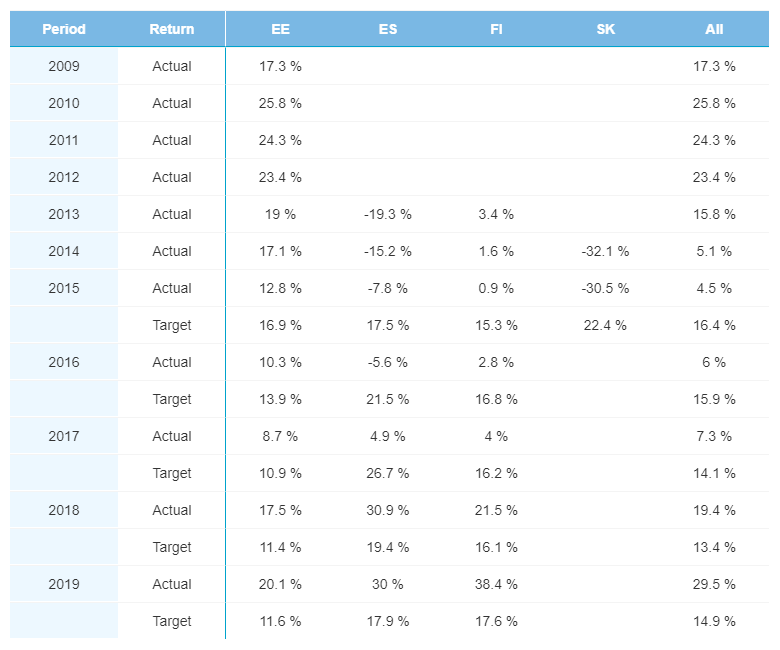
Quarterly Performance
A first look at returns for Q2 2019 show returns at 30.7%, more than 15% higher than the 14.9% target rate. Returns for several previous quarters fell slightly, but are still well above their respective target rates.
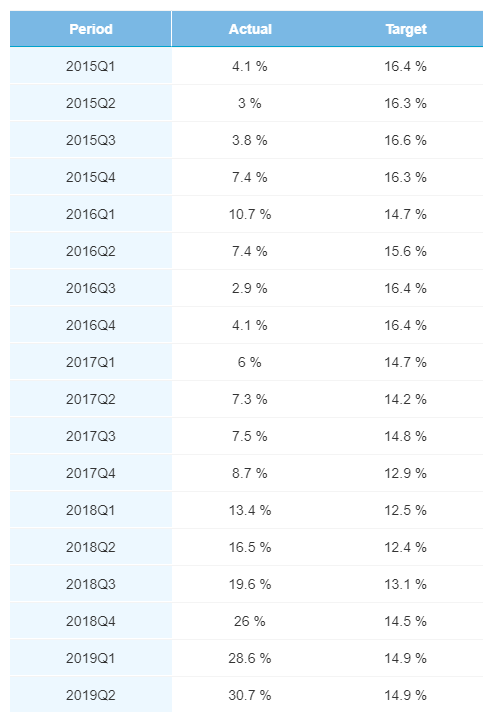
Finland
More Finnish E rated loans were issued in Q2 than the previous two quarters. Meanwhile, A and AA rated loans show dismal return rates below 2%, albeit with a very small issuance of loans.
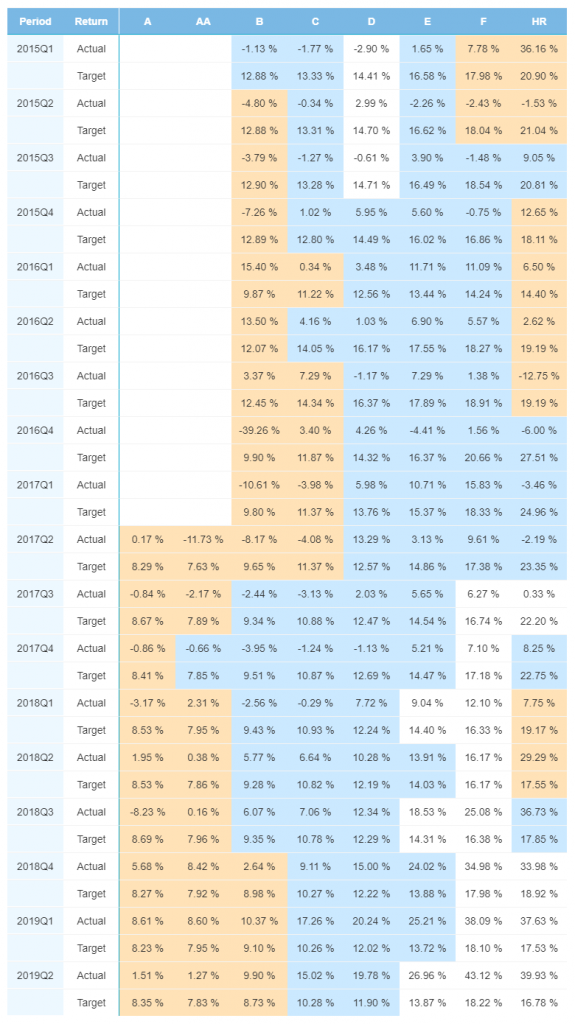
Estonia
A, AA, and B rated Estonian loans had higher return rates in September than in August. As for the most recent quarter, returns were all higher than their target rates, as E and F rated loans had the highest returns of 27.1% and 31.2%, respectively.
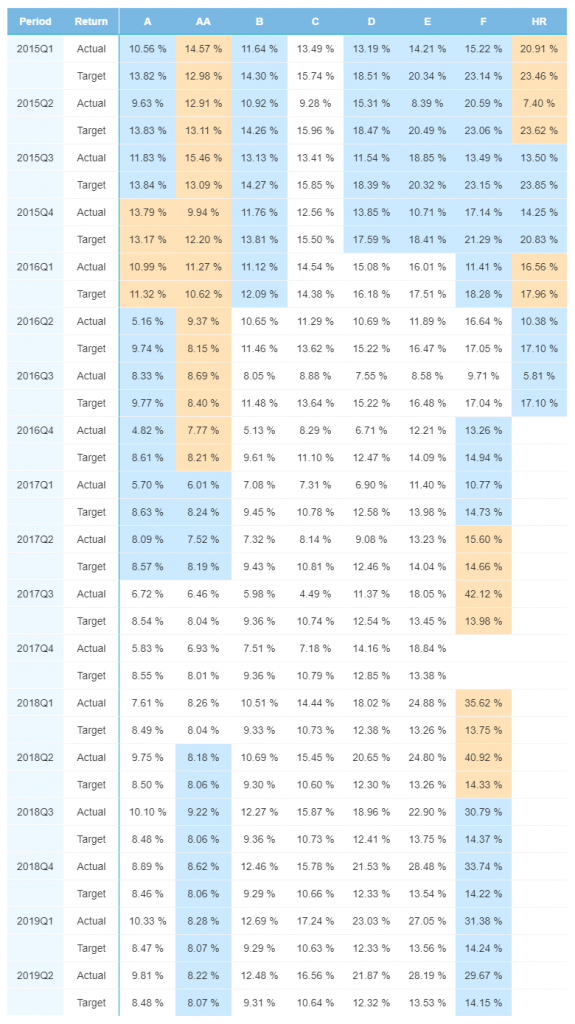
Spain
Bondora issued Spanish D rated loans for the first time in four quarters, and loan volume growth within Spain will continue in the coming 12 months. Returns on E rated loans in Q1 2019 stood at 2%. Overall, E and F rated Spanish loans continue to greatly outpace their targets dating back to Q1 2018.
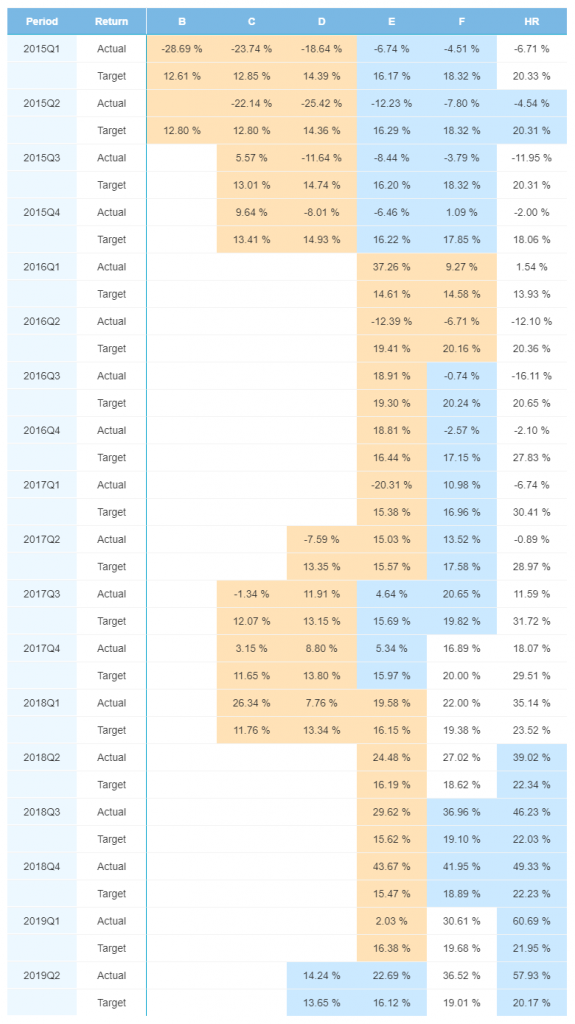
Economic News
While British Parliament passed the Withdrawal Agreement Bill proposed by Prime Minister Boris Johnson, it shut down an attempt by Johnson to fast-track the bill in three days. MPs urged the Prime Minister to work with them on a realistic timetable to make Brexit a reality. On the other side of the table, the European Union is considering giving Britain a three-month extension on Brexit. This idea caused Johnson to claim that he would hold a British general election before Christmas if Brexit is delayed until the end of the year. One EU diplomat sees this as the most likely scenario. “The most likely outcome is an extension until January 31, as requested by London, with the possibility of Britain getting out earlier, providing it finishes its legal processes,” the diplomat said.
Finland is working toward its goal of 75% employment, as the country announced 72.8% employment in September. This also includes a reduction in the number of people experiencing long-term unemployment and the number of young people unemployed. Still, this didn’t stop the country’s Ministry of Finance from reducing Finland’s growth rate lower to 1.5% in 2019 and 1.0% in 2020.
On the flip side, the IMF announced it is raising the economic outlook for Estonia to 3.2% growth from 3.0% growth earlier this year. The economic strength of Estonia is being led by falling unemployment, a rising consumer price index (CPI), and stable inflation. Over the past several years, Estonia has become less reliant on Russia as its trade and economic partner. The country has successfully diversified its foreign relationships and now stands on its own as an economically stable Baltic nation.
Tension in the region of Catalonia has hampered Spain’s economic growth. The country’s Economy Minister Nadia Calvino noted that the region is underperforming. “We have seen Catalonia growing less than the average in the rest of the country, where this used to be one of the most dynamic (regions)…I think we would have done even better if we had not had this situation in Catalonia.” she remarked. As a result, the Spanish government revised its growth outlook downward for the current year by 0.1% to 2.1%. Upcoming elections in November will also play a large role in the economic future of Spain, as a newly elected government will impose its own budgets and taxes across the country.